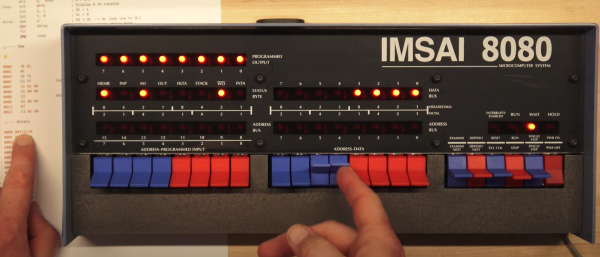As Tom Nardi mentioned in this week’s podcast, the Northeast US is pretty apocalyptically socked in with smoke from wildfires in Canada. It’s what we here in Idaho call “August,” so we have plenty of sympathy for what they’re going through out there. People are turning to technology to ease their breathing burden, with reports that Tesla drivers are activating the “Bioweapon Defense Mode” of their car’s HVAC system. We had no idea this mode existed, honestly, and it sounds pretty cool — the cabin air system apparently shuts off outside air intake and runs the fan at full speed to keep the cabin under positive pressure, forcing particulates — or, you know, anthrax — to stay outside. We understand there’s a HEPA filter in the mix too, which probably does a nice job of cleaning up the air in the cabin. It’s a clever idea, and hats off to Tesla for including this mode, although perhaps the name is a little silly. Here’s hoping it’s not one of those subscription services that can get turned off at a moment’s notice, though.
imsai 80803 Articles
Bootstrapping The Old Fashioned Way
The PDP-11, the Altair 8800, and the IMSAI 8080 were some of the heroes of the computer revolution, and they have something in common — front panel switches, and a lot of them. You probably have a fuzzy idea about those switches, maybe from reading Levy’s Hackers, where the painful process of toggling in programs is briefly described. But how exactly does it work? Well thanks to [Dave Plummer] of Dave’s Garage, now we have a handy tutorial. The exact computer in question is a reproduction of the IMSAI 8080, the computer made famous by a young Matthew Broderick in Wargames. [Dave] managed to score the reproduction and a viewer saved him the time of assembly.
The example program is a Larson Scanner, AKA making an strip of lights push a pulse of light across the strip. [Dave] starts with the Assembly code, a scant 11 lines, and runs it through an assembler available online. That gives us machine code, but there’s no hex keypad for input, so we need those in 8-bit binary bytes. To actually program the machine, you set the address switches to your start-of-program location, and the data switches to your first byte. The “deposit” switch sets that byte, while the “deposit next” switch increments the address and then stores the value. It means you don’t have to key in an address for each instruction, just the data. Get to the end of the program, confirm the address is set to the start, and flick run. Hope you toggled everything in correctly. If so, you’re rewarded with a friendly scanner so reminiscent of 80s TV shows. Stick around after the break to see the demonstration!
Continue reading “Bootstrapping The Old Fashioned Way”
IMSAI 8080 Resurrection
When MITS introduced the Altair 8800–about 43 years ago–it spawned the first personal computer clone: the IMSAI 8080. The clone had several improvements and MITS had difficulty filling orders for real Altairs, so they sold pretty well. [IMSAI Guy] has one of these vintage computers that has been in storage for over 30 years. He’s restoring the thing and there are 26 (and counting) videos of his progress. You can see the second video below, but be sure to check out the others, too.
The IMSAI is famous for being in the movie Wargames. We miss computers with switches and LEDs on a working front panel.














